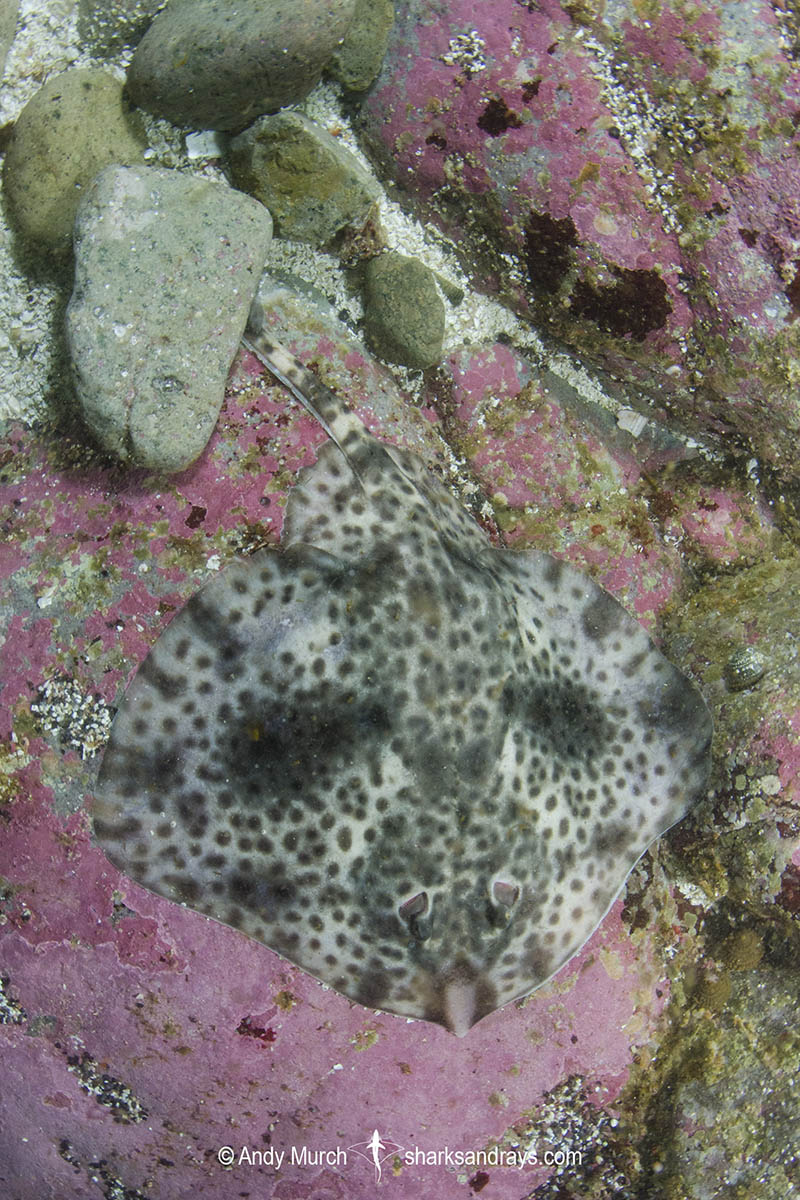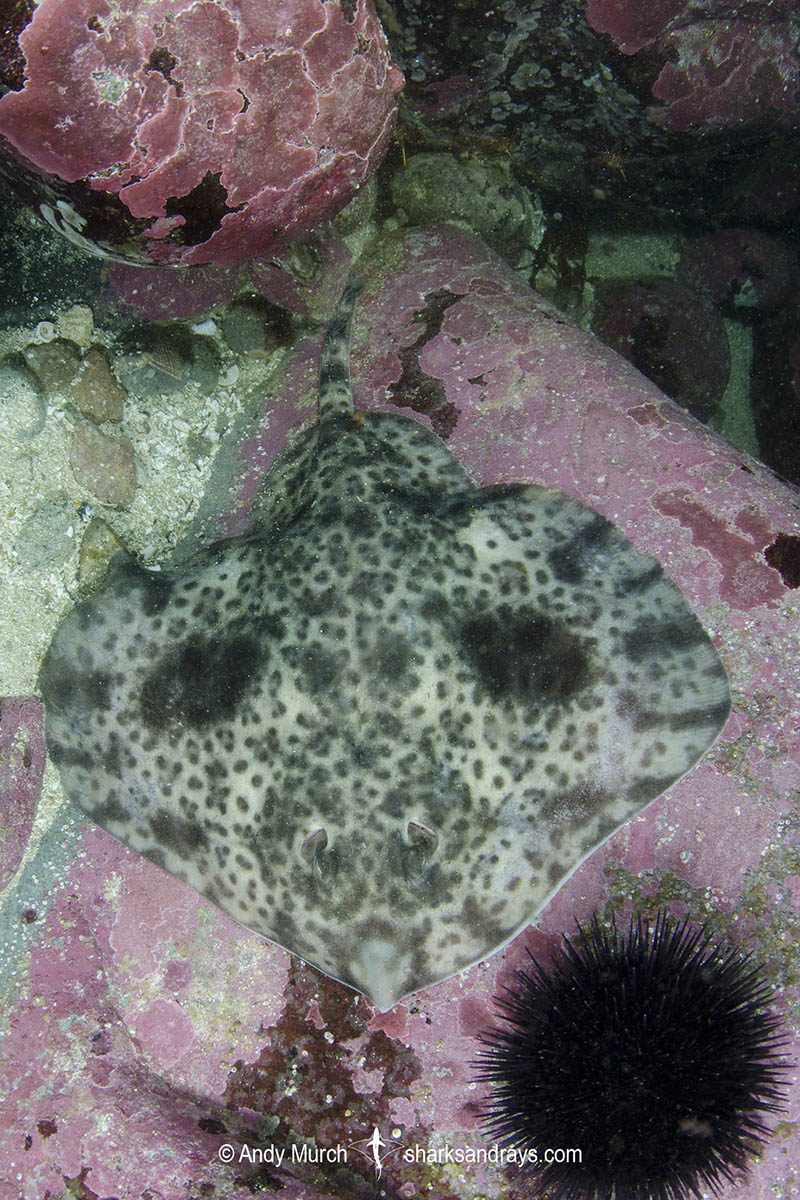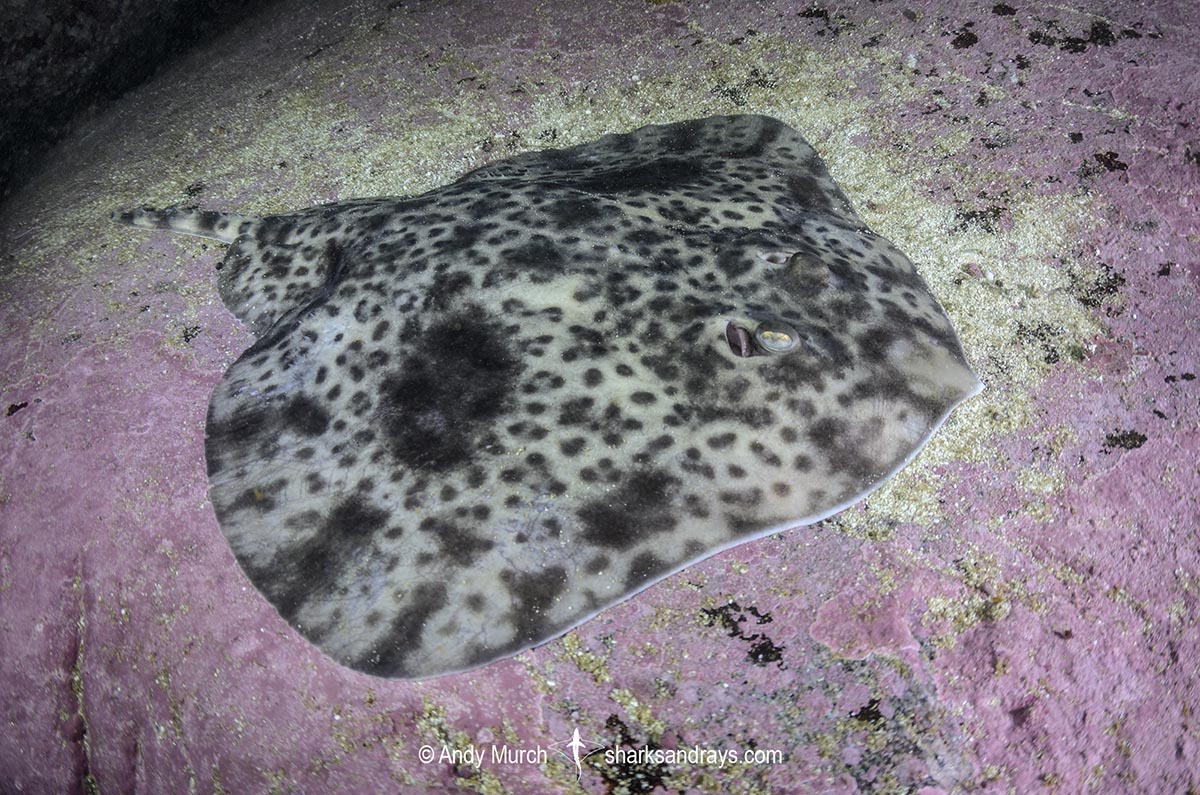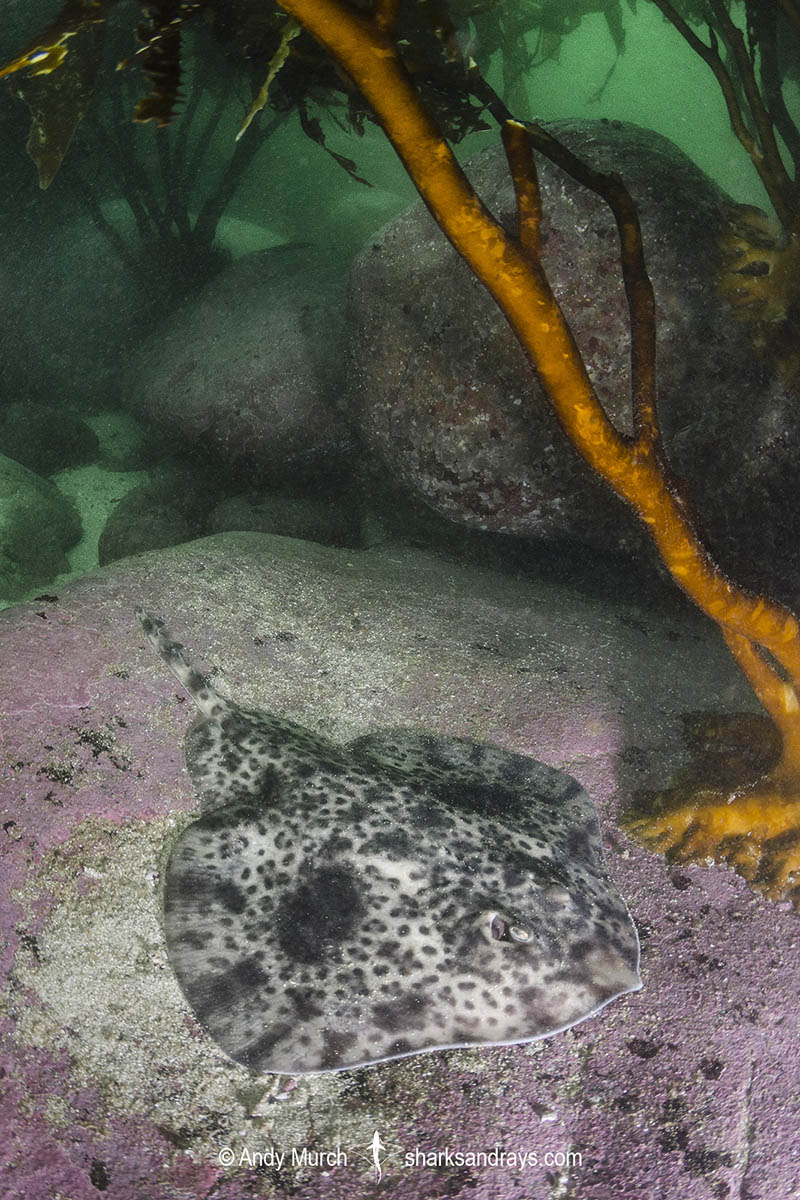Common name
Shorttail Fanskate.
Binomial
Sympterygia brevicaudata.
Synonyms
Psammobatis brevicaudatus
Identification
A medium-sized softnose skate with a broad heart-shaped disc; disc width ~1.2 times disc length. Eyes small. Orbit length 0.34-0.41 x snout length. Mouth relatively wide. Nasal flaps broadly lobed. Snout short, broad, and rounded with a small protruding tip. Pectoral fin anterior margins undulate; convex with a central concavity. Pectoral apices narrowly rounded. Pelvic fins large and long with weakly notched, broadly rounded outer margins. Anterior pectoral radials extend almost to snout tip.
Single pre and post-orbital thorns. Midline thorns discontinuous or ranging in size; more prominent on nape and tail. Dense thorn patches also present posteriorly on pectoral fins (personal observation). Tail short, firm, and narrow-based. Two well-developed, narrowly separated dorsal fins near tip of tail. Claspers slender with pointed tips.
Colour
Dorsum pale grey or pale greyish brown with numerous small black spots and blotches. Large dark ocelli on each pectoral fin. Blotches form a radial pattern around pectoral margins. Dark bands and small spots on tail. Ventrum mostly white.
Dorsal markings are described as ‘often indistinct’ but this may be due to the faded condition of dead or moribund specimens.
Size
Maximum length ~55cm. Length at birth unknown.
Habitat
Temperate seas. Demersal on soft bottoms and rocky reefs. From close inshore to at least 100m. Shorttail fanskates are very likely found much deeper as they are a bicatch in the hake and deepwater crustacean fishery that operates at ~500m.
Distribution
Southeastern Pacific. Occurs from Ecuador to Central Chile.

Conservation Status
NEAR THREATENED
The shorttail fanskate is a bycatch component of artisanal and industrial shrimp fisheries in Ecuador and Peru. It is rarely captured in Chile, except in the deepwater hake fishery. Declines are suspected in Chile. Although this skate is probably able to withstand moderate fishing pressure, a significant increase in landings in Peru in the last two decades has probably led to declines in the overall population.

Reproduction
Oviparous. Casing length 4-5cm, with short curved anterior horns and filamentous posterior horns that are sub-equal to casing length.
Diet
Mostly polychaete worms and small benthic crustaceans
Behavior
Poorly known.
Reaction to divers
Easily approached. Even when sand is wafted off of its disc, the shorttail fanskate generally remains motionless.
Diving logistics
Likely also common in Peru and Ecuador, but I have only encountered this species in central Chile. At Las Tacas in early November, I stumbled upon two animals in approximately 10m depth. They are apparently common in this area. It is possible they change depth seasonally.
What’s new
View our full list of updates
Similar species
Smallthorn Sandskate – Psammobatis rudis Distinguished by twin thorn rows on anterior tail more complex markings, often with white ocelli on pectoral fins.
Filetail Fanskate Distinguished by lack of thorns on disc and (reportedly) less distinct markings.





